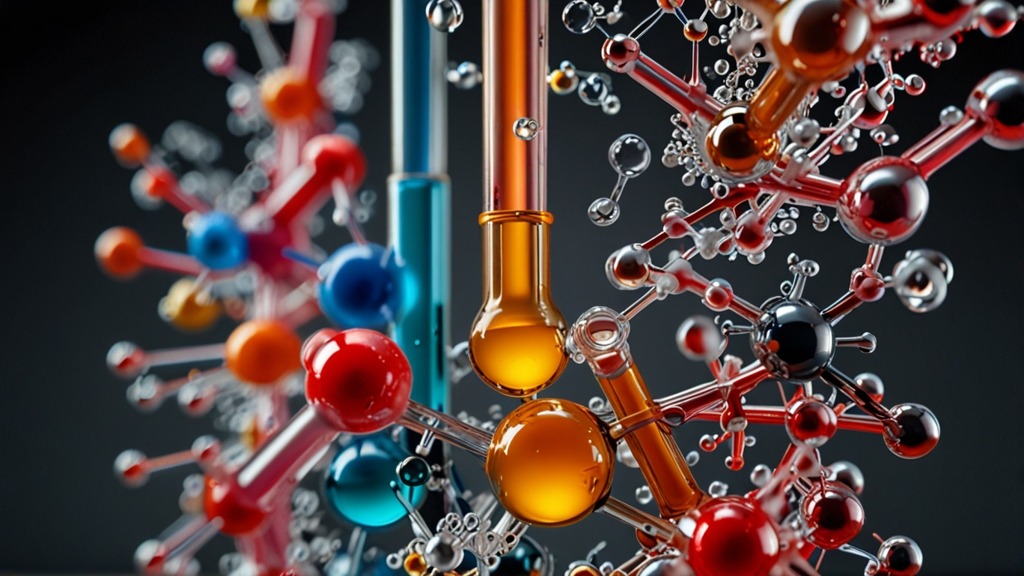Hidden Properties: The Chemistry Behind Everyday Materials
The materials we encounter daily might seem mundane at first glance, but behind each one lies a fascinating world of chemistry that defines their properties and utilities. From metals and plastics to ceramics and composites, understanding the hidden chemical properties of these materials reveals much about their function and potential applications.
Metals: From Conductivity to Corrosion
Metals are perhaps some of the most versatile materials known to humanity. Their properties, such as electrical conductivity, malleability, and durability, are heavily influenced by their atomic structure and bonding characteristics. For example, the sea of electrons in metallic bonds allows metals like copper and aluminum to conduct electricity efficiently, making them indispensable in electrical wiring and electronic devices.
“The inherent conductivity of metals arises from the delocalized electrons that move freely within a metallic lattice, maintaining electrical flow and contributing to the characteristic shine and strength of these materials.”
However, metals are also prone to corrosion—a chemical process involving the oxidation of metals in the presence of oxygen and moisture. Stainless steel, an alloy of iron with chromium, resists corrosion due to a passive oxide layer that protects it from further degradation. This combination of properties makes it suitable for applications in harsh environments, from kitchen appliances to medical instruments.
Plastics: Versatility Through Polymerization
Plastics are synthetic materials made from polymers, which are long chains of molecules bonded together. The chemical structure and composition of these polymers dictate the properties of the plastic. For instance, polyethylene, one of the simplest polymers composed of ethylene monomers, forms the basis for products ranging from plastic bags to bulletproof vests, depending on its density and molecular branching.
The versatility of plastics comes from the ability to manipulate their physical and chemical properties through copolymerization, cross-linking, and the addition of plasticizers. This enables the creation of materials with specific characteristics, such as flexibility, toughness, or transparency, tailored for various applications.
“The strength and flexibility of polymer chains in plastics allow these materials to be molded into a myriad of forms, making them ubiquitous in industries spanning from packaging to aerospace.”
Ceramics: Hardness and Heat Resistance
Ceramics are non-metallic, inorganic materials that exhibit exceptional hardness and heat resistance due to their crystalline structure and ionic-covalent bonding. They are commonly synthesized through high-temperature processes that enable the formation of bonds between metallic and non-metallic elements.
One of the most well-known ceramics, silicon carbide, demonstrates high thermal conductivity and extreme hardness, making it suitable for applications in abrasives, automotive parts, and even space shuttles. The unique arrangement of atoms within ceramic materials results in properties that are difficult to match with other types of materials.
Composites: Synergy of Different Materials
Composites are materials made from two or more constituent materials with different physical or chemical properties. When combined, they produce a material with characteristics superior to the individual components. Common examples include fiberglass, made from a plastic matrix reinforced with glass fibers, and carbon fiber composites, which combine carbon fibers with polymers to create lightweight yet incredibly strong materials.
The chemistry behind composites involves the careful selection of matrix and reinforcement materials to achieve desired properties. The interaction at the interface of the different phases is crucial, as it determines the overall performance of the composite. This synergy is harnessed in applications ranging from sporting goods to aerospace engineering, where materials must meet stringent requirements for strength, weight, and durability.
“The development of advanced composites has revolutionized various industries by providing materials that offer unmatched combinations of strength, flexibility, and lightweight properties.”
Conclusion
The chemistry behind everyday materials is a testament to the intricate interplay of atomic and molecular structures that define their properties. From the conductive pathways in metals and the versatile polymer chains in plastics to the resilient bonds in ceramics and the synergistic combinations in composites, each material is a product of detailed chemical engineering and innovation. Understanding these hidden properties not only enhances our appreciation of the materials we use daily but also paves the way for future advancements in material science and engineering.











